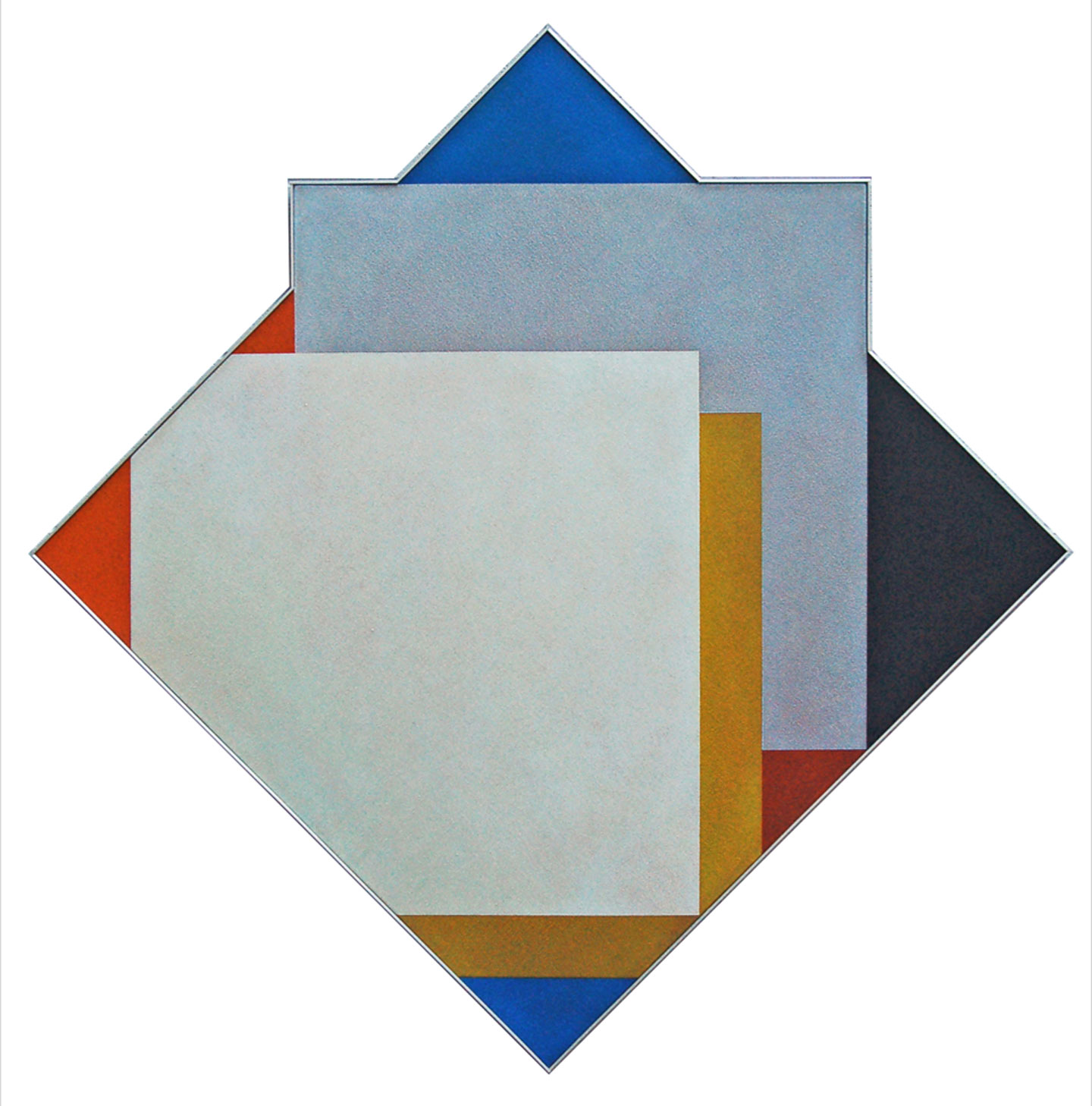The Art and Design of Roy Good, an Interview
Written by Lana Lopesi
Graphic Matters is a monthly column on issues and ideas related to New Zealand Design Culture


This is not your first retrospective exhibition at Te Uru, I’m interested to know what might be new in your upcoming exhibition Parrallel Universe: The Art and Design of Roy Good which opens next month?
I have two of the smaller galleries at Te Uru allocated for this exhibition. The larger will have 12 – 14 paintings representing the last 10yrs of exhibiting both in Auckland and Christchurch. This represents the decade that has elapsed since my retrospective in 2008 at the former Lopdell Gallery. Since ending my design business in 2000 and finishing with part-time teaching of graphic design and interior design at several institutes (MIT, Auckland School of Interior Design, and Unitec), the period since then has been the most productive of my art career with full focus on art.
The second gallery with be mainly examples of my design history beginning in 1967/68 with some examples of paintings that suggest a design / art crossover. Early production design for television (black+white) and pioneering video animations in the 1970’s and 1980’s.

It’s great to have these two parts of your practice coming together in a single show, do you see design and art overlapping or intersecting in your work?
Regular reviewing by art critics have noted more than once that “sitting on Good’s shoulder is the designer”. Suffice to say that like all good Bauhaus practitioners, there is no demarcation between Art / Craft / Architecture & Design, it’s a seamless field that one can practice without elitist selection of one being more important or less creative than the other. My work in design that was primarily in the field of corporate & national identity design and branding. I’ve worked in all the disciplines except architecture & craft, from interior, exhibition and trade fair, large event design (expos), graphic design for both TV and print and sculpture and setting design for TV and theatre.
Outside of your own practice, do you see this interdisciplinary way of working as being common place here in New Zealand? And why or why not?
Yes it’s not uncommon that the work produced in a related industry provides fine artists with a means of financial security or support but it’s not always the case that the content of both activities has a common philosophical foundation which was the ‘model’ to come out of the Bauhaus in Germany in the 1920’s and 1930’s. That’s where I and some other modernists practicing in NZ fine art see our origins.
You’ve been making work for a long time now I’m interested to know your insights in what might have changed during the time – has much changed in being a painter?
Early on after leaving art school (Ilam, Canterbury University 1965), I determined that abstract painting was to be my direction in art and this paralleled my thinking and approach to design as well with the term ‘modernism’ an apt description of both fields. In design and art the Bauhaus was the ‘model’ and my commitment to that philosophy has shaped both disciplines. Art writers have said over the years that my direction in art has been one of the most consistent in the NZ art scene. The author of the book comments “…..you couldn’t find a more ‘dyed in the wool’ Modernist than Good”.

I’m glad you brought up the book, Parrallel Universe: The Art and Design of Roy Good a book in the same title of the exhibition is being published alongside the exhibition. The book provides quite a detailed summation of your work to date as well as the ways in which you cross over artforms. What’s the significance of a publication like this one?
Most of us hope that after a long career in a particular field (or fields for that matter), after many reviews, criticisms and assessments of your work over the years, one comprehensive publication can put the endeavour into a perspective and a context. Especially the practice of abstraction which has been slow to be recognised as a legitimate and important part of the fine arts in New Zealand.
Recognition was a slow and occasionally painful beginning for a small somewhat marginalised group of artists in the 1960’s and 1970’s when focus on the subject matter of national identity, primarily in a figurative landscape style dominated the scene. Of course by the turn of the century painters who practiced abstraction had become an established part of the much wider spectrum of fine art in this country.
And lastly what do you hope people take away from your exhibition?
Experience tells me that if the viewer comes to the works free of preconceived notions of what to expect or an anticipation of a ‘story telling’, the paintings should work their magic in the best sense of the word and the ‘eye’ will experience a visually perceptive pleasure that is inherent in all the most honest art that is made.
In summary, a quote that I discovered only recently is the root meaning of the word artist – from the Latin ‘Ars’ meaning “to make well” – in other words ‘the art of making’.




